Biological Pest Control Explained Simply

Written by
Paul Reynolds
Reviewed by
Prof. Samuel Fitzgerald, Ph.D.Instead of relying on hazardous chemicals, this type of pest control relies on natural predators, and is considered sustainable.
There are three main strategies utilized: conservation, classical, and augmentative biological control.
Examples of natural predators effective in biocontrol are ladybugs, lacewings, and parasitoid wasps, which target specific pests.
This sustainable solution reduces chemical residues, and protects pollinators, while promoting soil health.
Additionally, this strategy can save farmers 40-70% in costs overtime by establishing self-sustaining systems.
Biological pest control strategies will work in home gardens and commercial farms with special attention to execution.
Article Navigation
Imagine a thousand years ago in the ancient Chinese citrus groves. Farmers created bamboo bridges between trees to enable ants to move freely between trees. The ants helped farmers eradicate all the leaf-eating pests they encountered. Consider the early biological pest control occurring here. Humans worked with nature instead of fighting against it.
Biological pest control employs natural predators, parasites, or pathogens to control pests. You are utilizing nature's own defenses instead of synthetic chemicals. This type of pest control keeps the balance of your garden's fragile ecosystem. Additionally, this will protect the important pollinators, such as bees, that help your plants thrive.
Opting for biological methods provides you with chemical-free protection; therefore, the soil remains healthy without toxic residues. Natural enemies will help manage pest populations, year after year. This leads to sustainable solutions beneficial to the long-term health of your garden. Your plants will develop resistance in their conditions.
Three Core Strategies
Conservation biological control stresses enhancing native predators already present in your garden. You plant flowers that are rich in nectar for beneficial insects. You create habitat (beetle banks) for your ground predators. This has universal application to perhaps all climate zones with local species.
In classical biological control, specialists from outside the region are introduced to control invasive pests. There is considerable testing of these introductions before arrival. The vedalia beetle was successful in preventing the cottony cushion scale in California citrus. Appropriate conditions must be established, specifically climatic conditions, to ensure long-term sustainability.
Augmentative control involves the release of mass-reared natural enemies for immediate effect. Greenhouses will use this weekly, typically for controlling spider mites. You can also buy ladybug packets for when aphids become an outbreak. This provides fast action, but requires the recurring expense of purchases for continual release.
Each strategy is suited for varied scenarios. Classification is best for preestablished systems. Classically addresses specific types of exotic pest problems. Augmentative responds to emergencies. Consider your local climate factors when you select the method. Fit the strategy to your garden's situation.
Key Biological Control Agents
Ladybugs and lacewings are so-called natural predators that actively prey upon pests you see in your garden. For instance, one ladybug consumes more than 50 aphids each day, and their larvae consume even more than that. Lacewing larvae or 'aphid lions' eat soft-bodied insects. These natural predators target predetermined pest targets and do not harm your plants.
Parasitoid wasps deposit their eggs inside host pests, such as caterpillars and whiteflies. The pathogens include bacteria and fungi that infect insects. For example, Bacillus thuringiensis kills a caterpillar after it has eaten the bacterium. Beauveria bassiana will infect a beetle under moist conditions. These agents are all particular to the target pests.
Beneficial nematodes manage grubs and soil pests, like weevils. They are tiny (microscopic), elongated worms that invade the pest and exude bacteria. Treat them through irrigation systems in the afternoon. Their moisture needs vary between 55-90°F. Nematodes provide chemical-free protection for your plants' roots.
These agents, unlike chemicals, leave no harmful residues. They promote pollinators and soil health. You find them at garden centers as ladybug packs or nematode collections. Home gardeners apply them safely for organic solutions. Nature supplies these helpers seasonally.
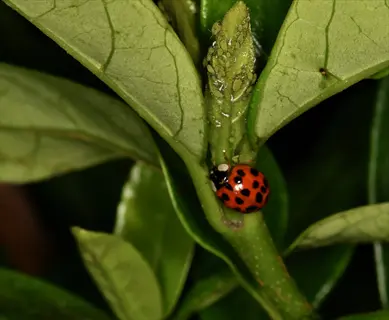
Ladybugs
- Fact: Adult ladybugs consume 50+ aphids daily while larvae eat even more during their development phase, making them highly efficient predators.
- Target Pests: Effectively control aphids, spider mites, mealybugs and scale insects on roses, vegetables and fruit trees throughout growing seasons.
- Habitat Support: Plant dill, fennel or marigolds to attract and sustain ladybug populations year-round through pollen and nectar provision.
- Release Guidelines: Apply 1,500 ladybugs per 1,000 sq ft (93 m²) during cool, humid evenings for optimal establishment and pest control.
- Lifecycle Insight: Complete metamorphosis from egg to adult takes 3-6 weeks depending on temperature and food availability conditions.
- Commercial Sources: Widely available as adults in ventilated containers from organic gardening suppliers during spring and summer months.
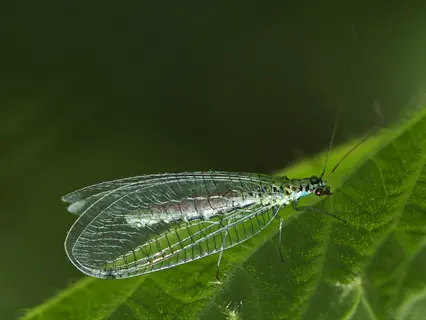
Lacewings
- Fact: Lacewing larvae called aphid lions aggressively consume soft-bodied insects during their entire development stage before pupating.
- Target Pests: Control aphids, thrips, whiteflies, moth eggs and small caterpillars on vegetable crops and ornamental plants.
- Application Method: Eggs shipped on perforated cards placed near infestations hatch within 3-10 days at 70°F (21°C).
- Consumption Rate: Each larva devours 200+ pests before metamorphosing into delicate, winged adults that continue the cycle.
- Habitat Enhancement: Maintain diverse flowering borders with cosmos or alyssum to provide nectar for adult lacewing sustenance.
- Seasonal Use: Most effective when released early in pest development cycles during warm months above 60°F (16°C).
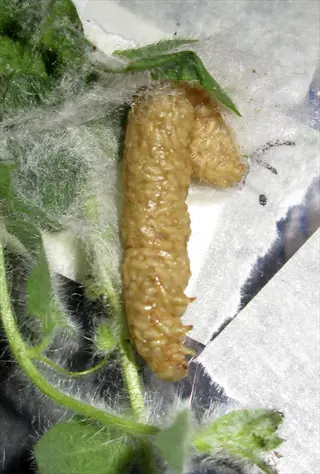
Parasitoid Wasps
- Fact: Minute wasps lay eggs inside host insects where developing larvae consume pests internally before emerging as adults.
- Target Pests: Specialize in controlling caterpillars, aphids, whiteflies and leafminers in orchards, vineyards and greenhouses.
- Example Species: Trichogramma wasps parasitize moth eggs preventing crop damage to corn, tomatoes and cotton plants.
- Release Efficacy: Properly timed releases can reduce pest populations by over 95% when applied preventatively in infested areas.
- Host Specificity: Each wasp species targets specific pests without harming beneficial insects or other non-target organisms.
- Application Timing: Release during early pest infestation stages at rates of 5,000-50,000 wasps per acre depending on crop.
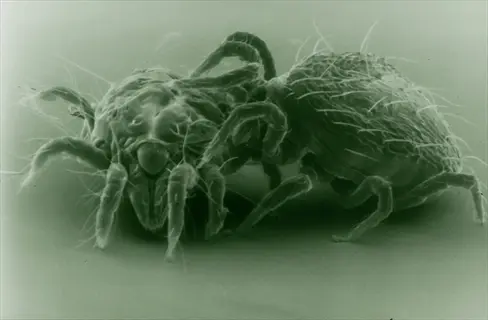
Phytoseiulus Mites
- Fact: These fast-moving predatory mites actively hunt and consume all spider mite life stages including eggs.
- Target Pests: Exclusively control spider mites infesting strawberries, cucumbers, ornamentals and greenhouse vegetable crops.
- Climate Requirements: Thrive at 60-90°F (15-32°C) with 60-90% relative humidity for optimal feeding activity.
- Release Rates: Apply weekly at 2-10 mites per plant during active infestations for sustainable pest management.
- Pest Detection: Introduce when first spider mite colonies appear since they reproduce slower than their prey.
- Compatibility: Can be combined with other biocontrols like Amblyseius mites without negative interactions.
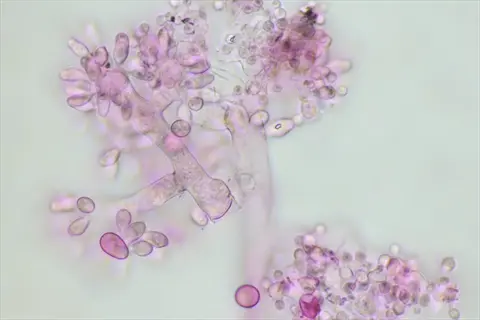
Bacillus thuringiensis
- Fact: Soil-dwelling bacterium produces crystal toxins lethal to caterpillars when ingested during feeding activities.
- Target Pests: Controls cabbage loopers, tomato hornworms, corn borers and mosquito larvae in aquatic habitats.
- Formulation Types: Available as wettable powders, liquid concentrates or granules for diverse application methods.
- Application Timing: Most effective against young larval stages during warm weather above 55°F (13°C).
- Safety Profile: Non-toxic to humans, birds, fish and beneficial insects including pollinators when properly applied.
- Resistance Management: Rotate with other controls to prevent pest adaptation to this microbial insecticide.
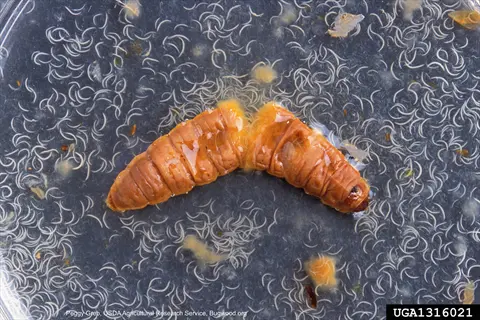
Nematodes
- Fact: Microscopic entomopathogenic nematodes enter pest bodies through natural openings and release symbiotic bacteria.
- Target Pests: Eliminate soil-dwelling grubs, weevils, fungus gnats and root maggots in lawns and gardens.
- Application Method: Mix with water and apply during cool evening hours using sprayers or irrigation systems.
- Soil Coverage: Treats 1,000 sq ft (93 m²) per application of approximately 10 million nematodes.
- Environmental Needs: Require moist soil conditions and temperatures between 55-90°F (13-32°C) to remain active.
- Persistence: Can survive several weeks in suitable environments while seeking new hosts to parasitize.

Beauveria bassiana
- Fact: Fungal spores germinate on insect cuticles, penetrating and causing lethal infections under humid conditions.
- Target Pests: Controls whiteflies, thrips, aphids, Colorado potato beetles and tarnished plant bugs.
- Field Persistence: Remains active for 7-21 days depending on humidity levels and UV exposure intensity.
- Application Frequency: Requires repeat applications every 7-14 days during heavy pest pressure periods.
- Compatibility Notes: Safe alongside predatory mites and wasps but incompatible with fungicide treatments.
- Optimal Conditions: Works best at 72-86°F (22-30°C) with humidity above 50% for spore germination.
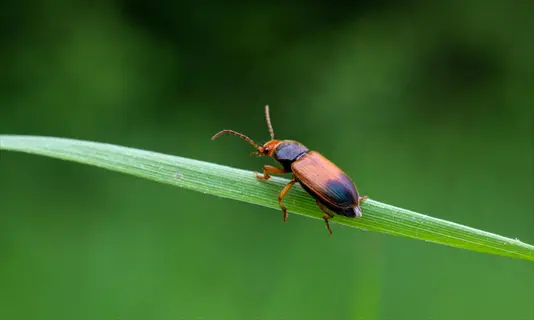
Ground Beetles
- Fact: Nocturnal carabid beetles hunt 50+ pests nightly including slugs, cutworms and root maggots.
- Target Pests: Control soil-dwelling insects and weed seeds in agricultural fields and home gardens.
- Habitat Features: Shelter under stones, logs or mulch during daylight hours to avoid predators.
- Conservation Practices: Maintain permanent beds and avoid excessive tilling to protect larvae habitats.
- Attraction Methods: Install beetle banks with perennial grasses to provide overwintering shelter sites.
- Lifecycle Insight: Most species complete one generation annually with larvae developing in soil.
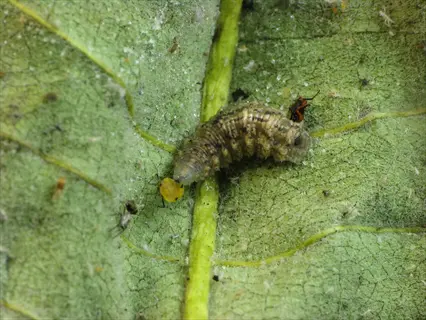
Hoverflies
- Fact: Larvae resembling small slugs consume 400+ aphids during development while adults pollinate flowers.
- Target Pests: Specialize in aphid control on lettuce, cereals, fruit trees and ornamental plants.
- Adult Attraction: Plant nectar sources like alyssum, buckwheat or yarrow to sustain populations.
- Lifecycle Duration: Complete metamorphosis from egg to adult takes approximately 21 days at 70°F (21°C).
- Release Strategy: Introduce eggs or larvae near aphid colonies for immediate pest suppression effects.
- Seasonal Activity: Most effective during spring and summer when aphid populations typically peak.
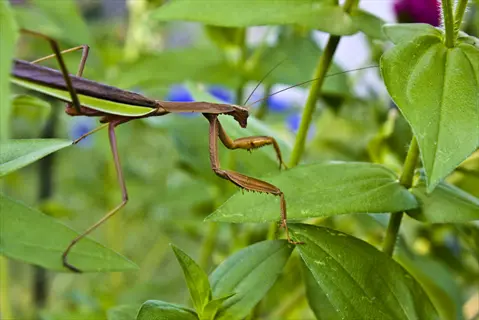
Praying Mantises
- Fact: Generalist predators ambush pests using spiked forelegs to capture live insects swiftly.
- Target Pests: Control grasshoppers, moths, beetles and flies in gardens and landscapes.
- Cautionary Note: May consume beneficial insects when pest populations decline significantly.
- Egg Hatching: Each ootheca egg case produces 100-200 nymphs that emerge during spring warmth.
- Habitat Enhancement: Maintain diverse plant structures and avoid pesticides to support populations.
- Conservation Status: Protected in some regions due to their beneficial insect control value.
Benefits Over Chemicals
Biological methods prevent water contamination from toxic runoff. Chemical pesticides pollute rivers and groundwater sources. Natural agents break down safely, leaving no residues. This protects aquatic life and your drinking water. Your soil stays healthy, supporting vital microbial activity.
Biological controls allow farmers to avert harmful exposure to chemicals. Customers buy products without toxic pesticide residue. Your family eats safer food. Children playing around treated areas are now protected. The health hazards of biologicals are eliminated for all.
Rice growers annually realize a 70% savings by utilizing natural predators. This eliminates the need for repeated purchases of costly pesticides, as self-sustaining populations are established. Organic certification allows entry into premium markets, thus improving profitability. These long-term savings can increase profits above the cyclic dependency on chemical use.
Native ladybug populations even increase by 40% in designated conservation areas. Insects benefit in the absence of broad-spectrum exposure. Your garden is a habitat for birds, spiders, and amphibians. Overall, biological control methods maintain biodiversity networks, and chemical ones jeopardize them.
Environmental Protection
- No Water Contamination: Biological agents break down naturally without leaving toxic residues that could pollute rivers, lakes, or groundwater sources used for drinking and irrigation.
- Soil Health Preservation: Unlike synthetic pesticides, biocontrol organisms enhance microbial activity and nutrient cycling in agricultural soils, maintaining fertility for future growing seasons.
- Pollinator Safety: Beneficial insects like bees and butterflies remain unharmed during applications, supporting essential crop pollination services and broader ecosystem balance.
Human Health Safety
- Zero Toxic Residues: Food crops show no detectable chemical traces after harvest, eliminating consumer exposure to carcinogens and neurotoxins commonly found in conventional produce.
- Farmer Protection: Eliminates occupational hazards including acute poisoning incidents and chronic illnesses linked to repeated conventional pesticide handling during application.
- Community Benefits: Prevents pesticide drift contamination in residential areas near agricultural zones, protecting children and sensitive populations from airborne chemical exposure.
Economic Efficiency
- Long-Term Savings: Rice farmers using biocontrol consistently report 70% less annual insecticide expenditure while maintaining comparable yields through natural pest regulation.
- Resistance Avoidance: Natural enemies co-evolve alongside pests, unlike chemicals that lose efficacy and require costly reformulation every 5-7 years due to resistance development.
- Premium Market Access: Organic certification opportunities increase profit margins by 15-30% for fruits and vegetables sold in specialty grocery and direct consumer markets.
Biodiversity Enhancement
- Native Species Support: Conservation strategies boost populations of beneficial insects by 40% in hedgerow habitats compared to chemically treated monoculture fields.
- Non-Target Protection: Preserves spiders, birds, amphibians and other wildlife that would be killed by broad-spectrum insecticides applied to control pest species.
- Genetic Diversity Maintenance: Prevents pest resistance that would otherwise require increasingly stronger chemicals, disrupting ecological balances across multiple trophic levels.
Sustainable Results
- Self-Perpetuating Systems: Classical biocontrol establishes permanent pest suppression after initial introduction phases without additional intervention or resource inputs.
- Reduced Applications: Augmentative methods require only 2-4 seasonal releases versus weekly chemical spraying cycles, lowering labor costs and equipment maintenance expenses.
- Climate Resilience: Biological systems adapt to local temperature and humidity conditions without creating resistant super-pests that emerge under chemical-intensive regimes.
Practical Applications
For aphid control, home gardeners will release ladybugs at the rate of 1500 per 1000 sq ft. Release ladybugs in the evening, when it is cool, in the Spring. Release the nematodes in 2 gallons of water to control grubs, also at dusk. Plant tramp crops (such as radishes) to shield broccoli plants from beetles. These scaled methods should still work for gardens.
Different strategies are needed for commercial orchards. The recommendation is 50,000 Trichogramma wasps per acre, released weekly, throughout the adult and moth season. Timing the applications according to the early stages of pest development. Greenhouses use Phytoseiulus mites at a rate of 10 per square meter, applied biweekly, at temperatures of 60-90°F. Timing is precise.
Regional climate change strategies. Northern farms use cold-tolerant mite strains. Southern farms apply Beauveria fungus at approximately 80% humidity. Match agents to local conditions. Implement bat houses at a rate of 1 per 500 square feet in areas with mosquito populations. Climate adaptation enable success!
Be careful with the quantities you measure. Use 10 million nematodes per 1,000 sq ft of soil. Convert gallons to liters for people outside the US. Use Bt (Bacillus thuringiensis) at 1 quart per acre for insect control for caterpillars. Using accurate quantities is what makes biological controls effective, regardless of your location.
Home Vegetable Gardens
- Ladybug Releases: Apply 1,500 ladybugs per 1,000 sq ft (93 m²) when aphids first appear, ideally during cool evenings in spring or early summer.
- Nematode Applications: Mix 10 million Steinernema carpocapsae nematodes with 2 gal (7.6 L) water for grub control; apply to moist soil at dusk.
- Companion Planting: Border tomatoes with basil and marigolds to repel hornworms and nematodes while attracting pollinators.
- Trap Crops: Plant radishes as sacrificial crops to lure flea beetles away from broccoli and cabbage plantings.
Commercial Fruit Orchards
- Trichogramma Wasps: Release 50,000 wasps/acre (124,000/hectare) weekly during moth flight periods to prevent codling moth damage in apples.
- Mating Disruption: Combine pheromone traps with Orius insidiosus releases at 1 bug/plant for thrips control in berry crops.
- Habitat Banks: Establish flowering strips every 330 ft (101 m) to sustain hoverflies controlling pear psylla.
- Fungal Sprays: Apply Beauveria bassiana at 1 qt/acre (0.95 L/0.4 ha) at 60-80% humidity for plum curculio management.
Greenhouse Operations
- Phytoseiulus Mites: Release 10 mites/m² biweekly when spider mite counts exceed 5 per leaf; maintain >60% humidity.
- Whitefly Control: Introduce Encarsia formosa wasps at 1 wasp/2 plants weekly when temperatures exceed 64°F (18°C).
- Preventative Nets: Install 50-mesh screens on vents to exclude pests while allowing airflow.
- Banker Plants: Grow barley in corners to maintain aphid colonies sustaining Aphidius parasitoids.
Row Crop Agriculture
- Conservation Hedgerows: Plant buckwheat every 330 ft (101 m) to boost lacewings controlling soybean aphids.
- Bt Corn: Use transgenic hybrids expressing Cry proteins during early growth for corn borer prevention.
- Cover Cropping: Seed crimson clover post-harvest to harbor ground beetles reducing cutworms by 40%.
- Augmentative Releases: Apply nematodes through irrigation at 25 billion/acre (62 billion/hectare) for root weevils.
Urban Landscapes
- Bat/Bird Houses: Install 1/500 sq ft (1/46 m²) to attract purple martins consuming 2,000 mosquitoes daily.
- Biopesticide Sprays: Treat ornamentals with neem oil at 2 oz/gal (59 ml/3.8 L) for scale insect suppression.
- Compost Tea: Apply aerated compost extracts weekly to boost microbes suppressing powdery mildew.
- Trap-Nesting: Place hollow stems in parks to attract mason bees pollinating city trees safely.
Challenges and Solutions
Many growers are also frustrated by slow establishment. Classical biocontrol can take many months before it shows any results. Citrus growers waited 18 months to see the vedalia beetles control scale. Consider combining augmentative releases to get an immediate impact. Release mass-reared agents every quarter for the first year. This provides good bridging.
Climate sensitivity restricts some agents. Phytoseiulus mites do not work well below 60°F. Use the cold-tolerant strains for more northern areas. Test agents in local test facilities first. This allows tomato greenhouses to maintain control during the winter season. Species must be matched to your regional conditions.
Non-target effects are a concern to ecologists. For example, praying mantises frequently consume beneficial insects when herbivore pests are in low abundance. Use specialist natural enemies, such as vedalia beetles, which have undergone two-year trials to assess their host specificity and likelihood of harming native species.
Excessively high costs discourage small farmers. The investment required to build mass-rearing facilities is in the half-million-dollar range. Consider whether a cooperative purchasing program would work for your state. Concerned rice farmers in Vietnam reduced costs to $12 per acre by purchasing in bulk together. Government subsidies could help farmers mass-adopt such a program.
Delays due to regulatory slow responsiveness. For example, obtaining cross-border regulatory approval for parasitoids against the ash borer took over three years. This situation highlights the need for expedited pathways for agents that have been proven effective. Mutual Recognition Agreements (MRAs) between regions can significantly reduce the time required for cross-border approvals. This can expedite responding to urgent pest emergencies.
Slow Establishment
- Challenge: Classical biocontrol takes months to establish, allowing pests to damage crops before control begins.
- Solution: Combine with augmentative releases for immediate impact while permanent populations establish.
- Implementation: Release mass-reared agents quarterly during first year alongside introduced natural enemies.
- Result: Citrus growers reduced waiting periods from 18 months to 6 weeks while maintaining long-term control.
Climate Sensitivity
- Challenge: Many agents like Phytoseiulus mites require 60-90°F (16-32°C) and fail in extreme temperatures.
- Solution: Select locally adapted strains or use protective structures like row covers during harsh periods.
- Implementation: Screen agents in regional test facilities before large-scale deployment across varied zones.
- Result: Tomato greenhouses maintained 95% spider mite control year-round using cold-tolerant mite strains.
Non-Target Impacts
- Challenge: Generalist predators like praying mantises may consume beneficial insects during pest shortages.
- Solution: Use specialist agents with narrow host ranges verified through quarantine testing protocols.
- Implementation: Mandatory 2-year host-specificity trials before approving classical biocontrol introductions.
- Result: Vedalia beetles exclusively target cottony cushion scale without harming native ladybug species.
High Initial Costs
- Challenge: Mass-rearing facilities require $500,000+ investments, limiting small-farmer access to biocontrol.
- Solution: Cooperative purchasing programs and government subsidies reduce per-acre costs by 40-60%.
- Implementation: Farmer collectives pool resources to buy bulk nematodes at wholesale rates for regional distribution.
- Result: Vietnamese rice cooperatives cut costs to $12/acre (≈$30/ha) versus $50/acre for individual purchases.
Regulatory Barriers
- Challenge: Cross-border approvals take 3+ years, delaying responses to invasive pest emergencies.
- Solution: Harmonize EU/US/Asian regulations through mutual recognition agreements for pre-approved agents.
- Implementation: Fast-track pathways for agents with 10+ years of safe use history in other regions.
- Result: Emerald ash borer parasitoid approvals accelerated from 48 to 14 months using emergency protocols.
5 Common Myths
Natural pest control is slower than the use of chemical pesticides, which limits its application during urgent pest outbreaks.
Augmentative biological control techniques, such as mass-releasing Trichogramma wasps, can produce measurable outcomes in 3-7 days with results similar to the rapid effect of some synthetic insecticides. For example, tomato growers in California will mass-release predatory mites, that can reduce spider mite densities by as much as 80% by one week post-release. These timely responses are possible because natural enemies are actively hunting down pests right after they are released, compared to chemical alternatives that need activation by the surrounding environment.
Introducing natural enemies may inadvertently threaten beneficial insects or facilitate an invasion.
Modern biocontrol programs require extensive host-specificity testing, which lasts between two and five years before introducing a natural enemy. The introduction of the vedalia beetle in 1888 is still considered the gold standard of programs, being completely host-specific to cottony cushion scale and not impacting other species. Oftentimes, regulated biocontrol programs will implement quarantine trials demonstrating 99.9% specificity to the targeted pest before natural enemy releases, and since that time, there has not been a documented invasive species incident in the biocontrol programs for over 50 year's time.
The cost of biological methods exceeds that of traditional pesticides in large-scale agriculture.
Long-term research indicates significant reductions in costs, up to 40-70%, after initial establishment of biocontrol measures. In Florida, citrus farmers spend $12/acre each season on Aphytis melinus parasitoid wasps for scale control, while the chemical cost is $50/acre. In Vietnam, rice farmers can access subsidized Trichogramma cards at $0.50/hectare. Saving money improves year after year and maximizing bio-control return on investments surpasses the initial investment as populations become self-sustaining and eliminate kebutuhan to repeat purchases in subsequent years that still require annual reapplication.
Natural enemies can cause damage to crops while they are busy attacking pests, creating an additional complication.
Specialist agents have evolved to attack certain pests and have no impact on plants. For example, ladybugs feed on aphids, but ladybugs have no mouthparts that allow them to chew leaves, and parasitoid wasps development is entirely inside host insects. Commercial products such as Bacillus thuringiensis have proteins that are only activated in the alkaline guts of insects, and they are inert to plants. Field experience demonstrates that biocontrol agents cause zero crop damage when there is an appropriately conceived pest-biological control agent match.
Biological pest control works only in organic systems and does not work in conventional farms.
Approximately 75% of greenhouse vegetable producers in Europe are using biocontrol with reduced chemical use. California almond growers release 1 billion parasitic wasps a year in combination with targeted sprays. This combination allows advantages of selective agents to functionality together - alternatives to neonicotinoids work to protect predatory mites that are key to managing secondary pests. This hybrid system is prevalent in major crops all over the world from Brazilian soybean to Spanish vineyards.
Conclusion
Biological control will restore nature's equilibrium in your garden or farm. It establishes self-sustaining ecosystems that maintain pests under natural control. This approach persists season after season with little disturbance. You have achieved true sustainable harmony with your ecosystem.
Chemical approaches create dependency cycles and damage ecosystems. Biological solutions build soil health and protect biodiversity for the long term. Every year, your land becomes more resilient. Nature's way provides better outcomes than using chemicals casually. Choose perennial health over a quick fix with side effects.
Home gardeners acquire inexpensive ladybugs and nematodes. Commercial farms utilize large-scale conservation measures, both of which are based on the same natural principles. You find strategies that work for your scale. Biological control provides universal ability across all growing situations.
Ecological farming continues to grow with innovations and discoveries. Researchers have developed strains of crops that enhance cold tolerance for northern growing climates. Farmers have been developing cooperative networks to facilitate the wider implementation of these practices. By participating, you help us advance this movement. Together we build healthier food systems for generations to come.
External Sources
Frequently Asked Questions
What is biological pest control?
Biological pest control uses natural predators, parasites, or pathogens to manage pests instead of chemicals. This approach deploys beneficial organisms like ladybugs for aphid control or nematodes for grub management. It creates sustainable ecosystems by mimicking nature's own pest regulation systems.
What are examples of biological control agents?
Common biological control agents include:
- Ladybugs that consume aphids and mites
- Parasitoid wasps that control caterpillars and whiteflies
- Predatory mites targeting spider mites
- Beneficial nematodes eliminating soil-dwelling pests
- Fungal pathogens like Beauveria bassiana infecting insects
What are the main types of biological control?
The three primary biological control strategies are:
- Conservation: Enhancing habitats for native beneficial species
- Classical: Introducing non-native natural enemies against invasive pests
- Augmentative: Mass-releasing reared agents for immediate impact
What are disadvantages of biological pest control?
Potential challenges include slower establishment than chemicals in some scenarios, climate sensitivity requiring specific temperature ranges, possible non-target effects if improperly implemented, and higher initial costs for mass-rearing facilities. However, these are mitigated through proper agent selection and implementation strategies.
Is biological control effective for home gardens?
Absolutely. Home gardeners successfully use methods like:
- Releasing ladybugs for aphid control
- Applying nematodes for grub management
- Planting companion species to attract beneficial insects
- Using trap crops to divert pests from main plants
- Installing bat houses for mosquito control
How does biological control benefit the environment?
Biological control eliminates chemical runoff contaminating waterways, preserves pollinator populations crucial for ecosystems, maintains soil microbial health for sustainable agriculture, and protects biodiversity by avoiding broad-spectrum insecticide impacts on non-target species.
Can biological and chemical controls be combined?
Yes, integrated pest management successfully combines both approaches. Selective biological agents work alongside targeted pesticides when compatibility is confirmed. For example, certain predatory mites function effectively with neonicotinoid alternatives in greenhouse operations.
What is a successful biological control case study?
The vedalia beetle introduction against cottony cushion scale remains the gold standard. This 1888 program saved California's citrus industry by exclusively targeting the invasive pest without harming other species. It established permanent control still effective today.
How cost-effective is biological pest control?
While initial setup costs can be higher, long-term savings reach significant percentages compared to chemicals due to:
- Eliminating repeat pesticide purchases
- Reduced equipment and labor expenses
- Access to premium organic markets
- Sustainable self-perpetuating populations
- Government subsidy programs for implementation
Are biological control methods safe for humans?
Biological control poses minimal human health risks compared to chemical alternatives. Agents leave no toxic residues on food crops, eliminate farmer exposure to hazardous pesticides, and prevent community contamination from chemical drift. Proper handling ensures complete safety.

